A Complete Solution for the Analysis of Volatile Organic Compounds (VOCs) in Water
Introduction 
Demand for lower detection limits of volatile organic compounds in drinking water requires the use of a mixed mode GC-MS system. The ability for simultaneous full scan and selection ion monitoring (SIM) is vital for low-level quantitation. The United State Environmental Protection Agency (US EPA) 524.3 method details the analytical method for VOC analysis of water by capillary gas chromatography with mass spectrometry.
The SCION Single Quad (SQ) mass spectrometer has a unique feature, Compound Based Scanning (CBS), for easy automated setup and optimisation of complex mixed mode methods. CBS makes use of libraries that store all the essential information about a compound such as retention time, time window, qualifier and quantifier ions. Compounds are loaded directly into a method, scan times are optimised with data acquisition and processing tables synchronised. Managing large number of SIM acquisitions is made easy in mixed mode.
Experimental
The SCION 8500 GC coupled with the SCION SQ mass spectrometer and Tekmar Atomx XYZ Purge and Trap sample concentrator was used to achieve a highly automated and robust solution for VOC analysis.
Calibration standards were prepared at 0.1, 0.5, 1,2,5,10,20 and 40ppb with the method preservative. Standards at lower concentrations were required for SIM, typically in the range of 5-100ppt. A 5mL sample size was used for the analysis as determined by US EPA 524.3.
The purge and trap and GC parameters are listed in Table 1 and 2. The purge and trap conditions for drinking water come factory installed on the Atomx.
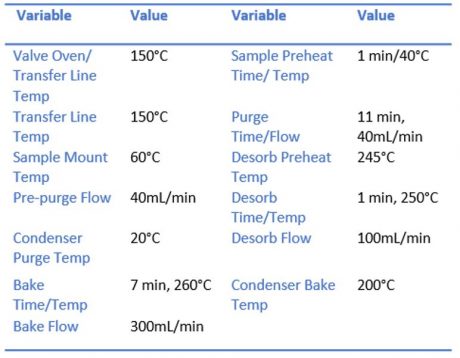
Table 1. Analytical conditions of the Atomx XYZ Purge and Trap
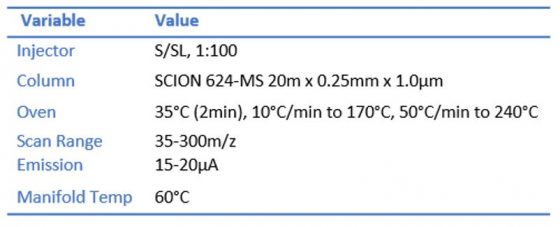
Table 2. Analytical conditions of the SCION GC and MS
Results
The SCION SQ was tuned to meet the requirements for spectral resolution for Bromofluorobenzene (BFB), using target ion ratio tuning (built directly into the software). All acceptance criteria was exceeded so therefore passed.
Using CBS, a mixed-mode method was created by importing all target compounds from a library containing all of the associated SIM ions. Compound graphs can be created, based upon the retention time and retention time window. CBS optimised the placement of SIM ions throughout the run for maximum sensitivity and optimal dwell times.
The calibration standards were injected and calibration curves were generated. Calibration correlation coefficient for Method 524.3 analytes were 0.9995 respectively. t-butyl alcohol (TBA) is usually a poor compound to analyse by purge and trap. However, Figure 1 shows the calibration curve for TBA and it’s excellent response using the SCION analyser whereas Table 3 shows calibration statistics for the analytes in the EPA method. Precision and accuracy were determined after the completion of the validated calibration.
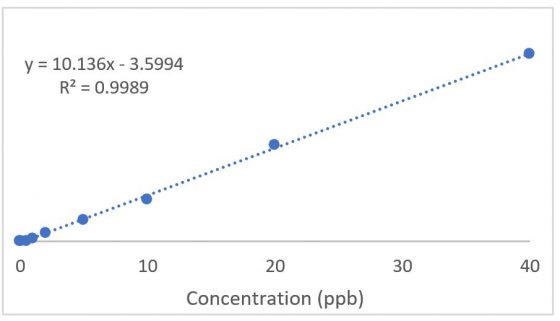
Demonstration of capability includes VOC analysis of water with a minimum of seven replicates. Table 3 also provides a summary of the precision and accuracy data as well as the method detection limit (MDL), for ten replicates. All compounds analysed easily met the requirements, with an average recovery of 99.27% and %RSD of 4.49. Method 524.3 states that the recovery must be within 70-130%; with all compounds passing this criteria.
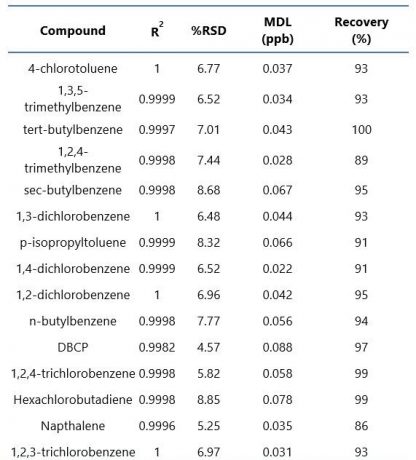
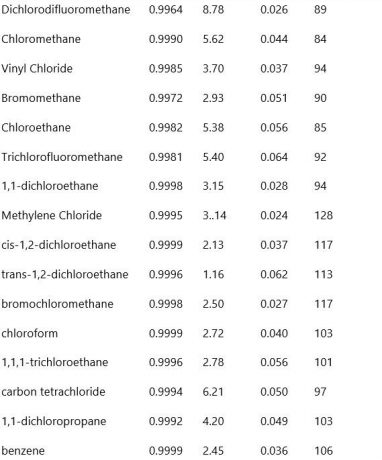
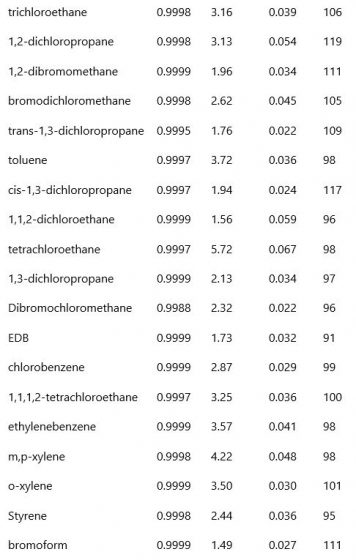
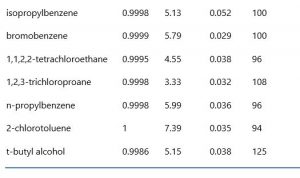
Table 3. Calibration statistics of selected compounds (n=10)
Table 4 shows the data obtained for 1,2-dibromoethane when the individual calibration points were calculated against the calibration curve.
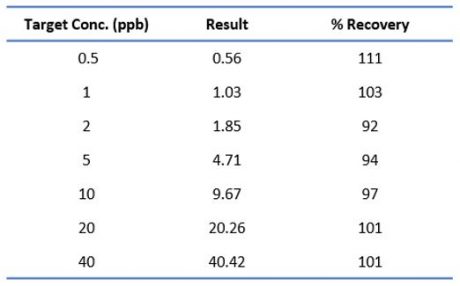
Conclusion
The Tekmar Atomx XYZ purge and trap sample concentrator coupled with the SCION SQ Mass Spectrometer is a total solution for EPA VOC methods. The method is easily setup for both full scan and SIM methods using the unique Mass Spec Work Station software. Excellent repeatability, recovery and linearity of the VOCs demonstrate the excellent performance of the SCION system, with all requirements of EPA Method 524.3 being exceeded.
Download Application Note
Download the complete Application Note: A Complete Solution for the Analysis of Volatile Organic Compounds (VOCs) in Water
SCION Gas Chromatography Analyser
A SCION Gas Chromatography Analyser was used to conduct this research of VOCs in water (EPA 524). Providing excellent solutions for Environmental, Oil and Gas and Chemical industries, find out more about SCION GC Analysers.
Alternatively if you would like to speak to a member of our team for more information, please don’t hesitate to get in touch. We look forward to being of assistance.
